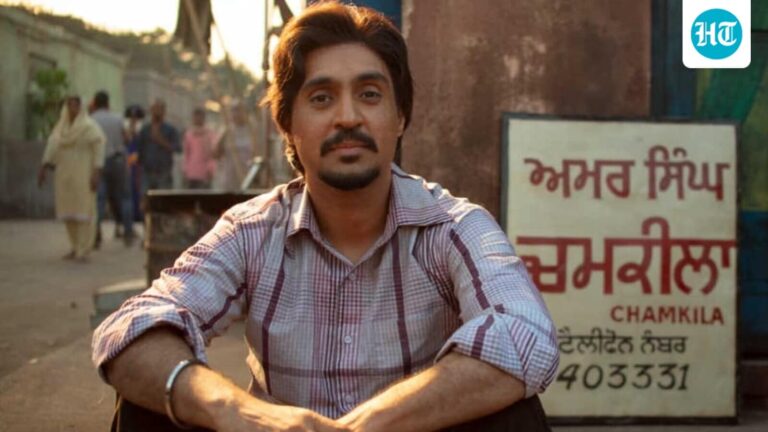Ritwik Ghatak’s Timeless Significance Amidst Societal Fault Lines

Ritwik Ghatak’s films were raw, authentic portrayals of human experiences.
Ritwik Ghatak, acclaimed for his impactful storytelling, made his final film in 1974 and passed away in 1976. His enduring legacy is underscored by a recent incident where the BJP’s youth wing in West Bengal sought to incorporate clips from his movies into their campaign materials, showcasing how his work continues to resonate, even in contemporary politics.
Interestingly, members of Ghatak’s family expressed their disapproval, highlighting the ongoing debate about the ownership of his artistic contributions. BJP leader Samik Bhattacharya argued that no single family can monopolize a filmmaker’s legacy that belongs to a wider audience.
The discourse surrounding Ghatak has gained momentum recently. Just after the 2024 ‘Bangladesh Spring’, attention was drawn to the demolition of his ancestral home in Rajshahi, reigniting discussions about his impact and relevance.
This year marks the centenary of Ghatak’s birth, and numerous events celebrating his work have taken place across West Bengal. Film historian Sanjay Mukhopadhyay has been actively involved, traveling to various locations to discuss Ghatak’s influence on cinema.
Mukhopadhyay and filmmaker Goutam Ghose are collaborating on a collection of essays that delve into Ghatak’s works, with support from the West Bengal government. The anniversary serves as a platform to honor one of the greatest filmmakers in Indian history.
Exploration of Identity and Displacement
Ghatak is revered for addressing themes of identity, home, and national belonging, which resonate profoundly today amid global issues of forced migration. As Ghose articulates, the ongoing crises in places like Gaza and the plight of the Rohingyians echo the struggles Ghatak portrayed in his films.
Throughout his career, particularly in the 1950s to 1970s, Ghatak produced eight full-length films, alongside numerous documentaries and shorts. His storytelling consistently revolved around themes of homelessness, identity, and dignity.

Ritwik’s debut film, *Nagarik* (The Citizen) in 1952, explored a young man’s quest for employment in Calcutta and his family’s struggle for a permanent home, while his notable works like *Meghe Dhaka Tara* (The Cloud-Capped Star) and *Subarnarekha* (The Golden Thread) portrayed the compelling narratives of displaced individuals seeking a sense of belonging.
The grim realities depicted in his films were contrasted with a glimmer of hope, suggesting that change is always possible, despite the tragedies faced by his characters.
The ongoing discussion about Ghatak’s films reflects a yearning for authenticity and truth in storytelling that remains relevant today. His works continue to inspire filmmakers and audiences alike, almost fifty years after his passing.
As filmmaker Jahnu Barua notes, Ghatak’s films are critical studies that offer valuable lessons even now. His commitment to portraying the human condition speaks volumes, reminding us that art can provide insight into society’s enduring dilemmas.
Ghatak’s revolutionary approach transformed melodrama into art, and he was not shy to voice his political beliefs through cinema. His contributions remain significant and continuously provoke thought and dialogue, highlighting the universality of human experience.
Today, as we commemorate Ritwik Ghatak’s legacy, discussions surrounding his work reflect not only on past histories but also on our collective future. As his films once did, they encourage audiences to confront and engage with the complexities of life.
Shamya Dasgupta is the editor of Unmechanical—Ritwik Ghatak in 50 Essays (Westland Books, 2025).
Similar Posts

Essential Details for Tonight’s Premiere of The Chase NZ
The first episode of *The Chase New Zealand* debuts tonight, featuring two prominent figures from the quiz realm as they face off against Kiwi contestants. After a prolonged buildup, this four-part special will pit sixteen New Zealanders against renowned trivia experts who are well-established names in the UK and Australia. Here’s everything you need to…

Zhang Yiyang Executed in 2024: Court Confirms Murder of Girlfriend
Zhang Yiyang’s Death Sentence: A Shocking Case Chinese singer-actor Zhang Yiyang received a death sentence via firing squad in December 2024. This severe punishment comes after the murder of his 16-year-old girlfriend in 2022, confirmed by a recent investigation from a Chinese court. Historical Context Zhang holds the unfortunate distinction of being the first known…

Kantara Chapter 1 Box Office Hits ₹550 Crore, Surpassing Dhoom 3!
Kantara Chapter 1 Box Office Update After ten days in theaters, Kantara Chapter 1 has made a remarkable impact on the box office, crossing the ₹550 crore mark. This significant achievement places the film alongside other major Indian releases. Kantara Chapter 1 worldwide box office collection day 10: The Rishab Shetty film is breaking records….

Udhayanidhi Stalin Urges Vijay, TVK Leaders to Prevent Future Rally Stampedes
Tamil Nadu’s Deputy Chief Minister on Karur Incident Udhayanidhi Stalin, the Deputy Chief Minister of Tamil Nadu and a noted actor, addressed the media regarding the tragic stampede that occurred during a rally in Karur. He emphasized the importance of responsibility among political leaders. Udhayanidhi’s Remarks Udhayanidhi Stalin addressing the press about the stampede at…

Diljit Dosanjh Celebrates International Emmy Nod for Amar Singh Chamkila
Diljit Dosanjh’s Exciting Emmy Nomination Singer and actor Diljit Dosanjh has made headlines following his nomination for the prestigious International Emmy Awards 2025. This marks his first-ever recognition on a global stage, with the nominations revealed by the International Academy of Television Arts & Sciences. Diljit Dosanjh will compete against David Mitchell, Oriol Pla, and…

Vijay Asks Madras High Court for Independent Probe into Karur Stampede
Vijay’s Legal Move in Response to Karur Tragedy Following a tragic incident during a Tamilaga Vetri Kazhagam (TVK) rally that resulted in 39 deaths and left 95 injured, actor Vijay has approached the Madras High Court. His political party is now seeking an independent inquiry into the stampede that occurred on Saturday. Actor Vijay speaks…